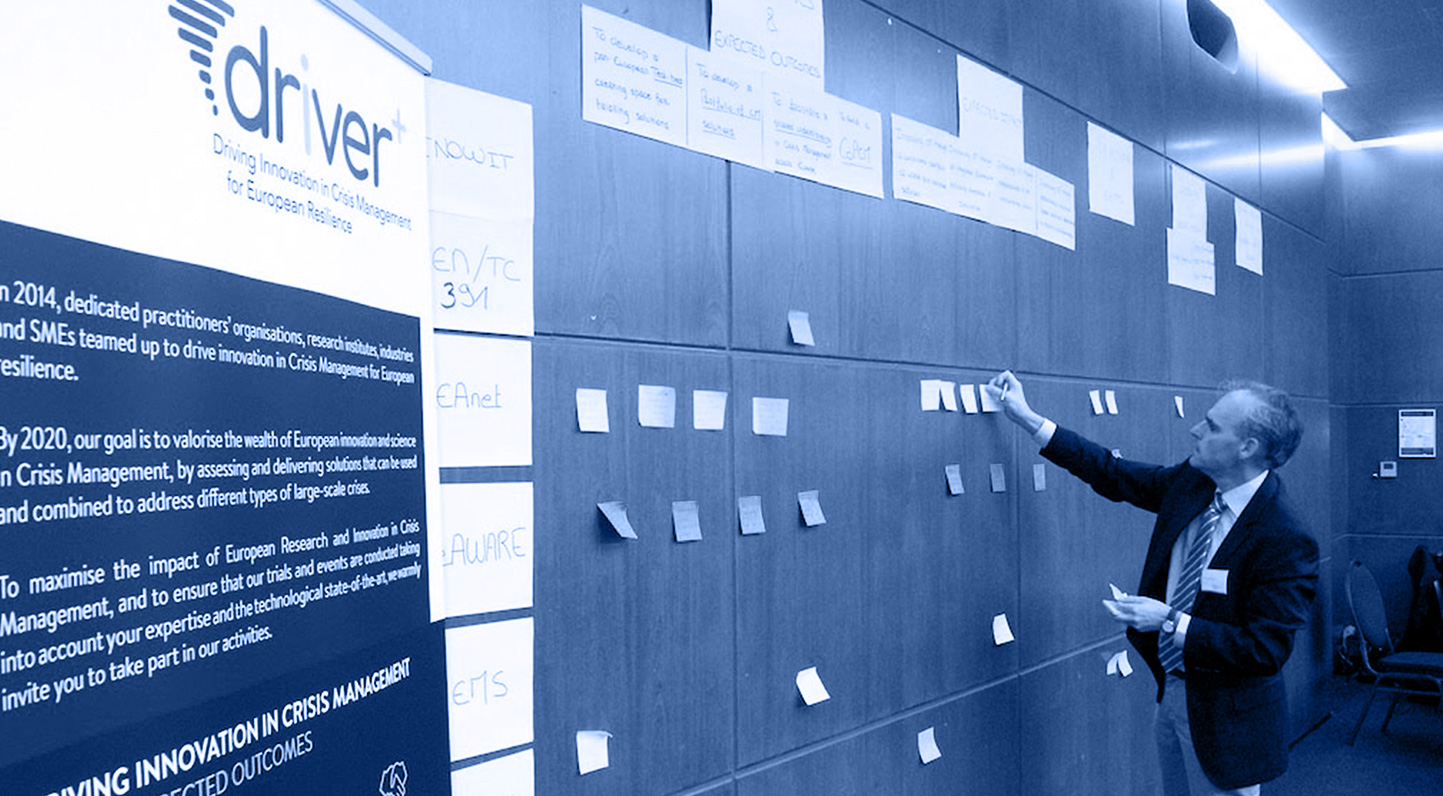thorough analysis and
communication between
stakeholders
Evaluation coordinator
Practitioner coordinator
About
What this tool
is for
The idea of a baseline is to depict your as-is process. This means you “paint a picture” that shows all roles, activities and information exchanged in your gap situation. This can then be used for communication purposes: by using a picture you can explain the crisis management process to a solution provider in a fast and easy way. This will help you with the whole integration of any kind of solution into your gap process, as well as the technical integration.
So what needs to be done? First you need to gather your crisis management practitioners - the ones who know the gap and its context best. In doing so, you have already chosen some of the roles that you envision with play a role in the trial. Now go through each gap and the concerned trial context. Brainstorm with your practitioners about the process that surrounds your gap - in which circumstances does who encounters the gap? Try to be as comprehensive as possible by listing roles, equipment and everything (you can get inspired by the trial context template).
After you have listed all this, try to depict it in a kind of flowchart to show how all of these things and persons are connected.
Create a “who is doing what, when, with what equipment, where and under which circumstances” - picture. In the following page you will find some ideas on how to do this.
This picture / flowchart is your baseline. It is a model of your gap-process. In the best case scenario it also includes the kind of information exchanged and means by which they are exchanged. Visualisation is a great tool in order to really identify the key “gap points”. It is a tool that empowers people to talk about specific aspects. By doing this you will be able to understand the gap best and therefore to find an innovative sociotechnical solution that can bridge it. This is the most important step as it allows you to select the most suitable solutions for your trial - not based on the fact that they claim to be the best for you, but based on the fact that you are really clear about your needs.
As mentioned, you start with meeting your practitioner participants and start talking about the identified gaps and the written down trial context.
Then initiate a brainstorming session for each gap. Use sticky notes and a whiteboard.
- Mark a timeline on your whiteboard. This represents the start and end of your gap process.
- Now add along this timeline each task/ action that is part of this special gap process.
- In a next step add all equipment needed in these tasks/ actions.
- Then also add all the roles.
Now you might want to re-arrange your sticky notes. Dedicate one lane for each role. Again work along your timeline.
- Put each task/ action with the attached equipment to the role that fulfills this task/ action.
- Think of the fact that the tasks influence each other and add further tasks/ actions that you identify are necessary in oder to create one whole, consistent course of action.
- In the next step think of the communication processes between the roles. What kind of information is given? When? To whom? By the use of which means (radio, landline, etc.). Write the kind of information and the means used on a sticky note and connect the roles by using your marker.
Congratulations! You have a complete depiction of your baseline. As this is an analogous version, we recommend to first: take pictures, and second: create a digital version. Within DRIVER+ we used the BPMN, the Business Process Model and Notation, to depict the baseline. You find an introduction to it online: www.bpmn.org. But feel free to use other tools.

Link
- This is not a physical tool but a process
